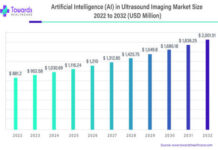The global Compound Semiconductor market size was valued at USD 38.25 billion in 2021 and is forecast to be a readjusted size of USD 55.42 billion by 2028 with a CAGR of 5.48% during the forecast period 2022-2028.
Major factors driving the growth of the Compound Semiconductor market
One of the factors propelling the Compound Semiconductor market growth is the increasing demand for SiC devices in power electronics and the ongoing development of technologies in the GaN ecosystem.
Compound semiconductors are being used more and more in data centers and Light Emitting Diodes (LEDs). This factor will further drive the Compound Semiconductor market.
TRENDS INFLUENCING THE GROWTH OF COMPOUND SEMICONDUCTOR MARKET
One of the main drivers of the compound semiconductor market expansion is the rising use of compound semiconductors in Light Emitting Diodes (LEDs). Halogen bulbs and other traditional lighting sources are being replaced by LEDs. There is a huge need for fluorescent and incandescent lighting in both household and commercial settings. Additionally, LEDs are frequently employed in the automotive sector since they provide brighter illumination than conventional lighting. The compound semiconductor market is projected to gain from the growing use of LED lighting.
Transceivers are frequently used in data centers to send and receive communications. Compound semiconductors are used in transceivers to increase their speed. In the upcoming years, increasing demand for high-speed transceivers is projected to drive Compound Semiconductor market growth. Furthermore, the primary consumer of compound semiconductors is the smartphone. In recent years, there has been intense competition in the smartphone sector. It is further projected that the global Compound Semiconductor market will be driven by the rising use of mobile phones.
SiC devices have three times the thermal conductivity and a breakdown electric field strength that is ten times greater than those made of silicon. This characteristic lessens the complexity and expense of the device, enhancing reliability and enabling it to be used in a variety of high-voltage applications, including solar inverters, power supplies, and wind turbines. The market for SiC power devices is expanding due to the rising demand for power electronics. Electrical power is effectively and efficiently controlled and converted thanks to power electronics. SiC power devices are increasingly being used as a result of the rising demand for power electronics in sectors like aerospace, medicine, and defense. This factor is expected to drive the growth of the Compound Semiconductor market.
The technology used in 5G wireless base stations must combine efficiency, performance, and value. GaN solutions play a crucial role in providing these qualities. GaN-on-SiC delivers considerable gains in 5G base station performance and efficiency over Laterally Diffused Metal-Oxide Semiconductors (LDMOS). Greater thermal conductivity, strong robustness and reliability, improved efficiency at higher frequencies, and comparable performance in a lower-size MIMO array are further advantages of GaN-on-SiC. GaN is anticipated to improve power amplifiers for all transmission cells in the network which might have a substantial impact on the rollout of fifth-generation (5G) networks.
Additionally, the adoption of several emerging technologies like the Internet of Things, artificial intelligence, and machine learning is increasing the demand for high-speed semiconductor devices, which is favorably impacting the Compound Semiconductor market growth.
COMPOUND SEMICONDUCTOR MARKET SHARE ANALYSIS
Japan has a global share of around 25% and is the top producer of compound semiconductors. North America came in second with 20%.
The top five manufacturers in the sector are Sumitomo Electric Industries, SCIOCS, Mitsubishi Chemical, Dow Corning, and Shin-Etsu Chemical, with a combined market share of about 40%.
Based on type, GaN compound semiconductors are expected to be the most lucrative. GaN is capable of high-speed switching and device downsizing because of its high breakdown voltage and low conduction resistance properties. GaN devices are tiny (low parasitic capacitance), allowing for high-speed switching, high electron mobility and density, and easy shrinking. In contrast to conventional silicon devices, which need a larger chip surface to lower on-resistance, GaN devices can be easily miniaturized.
The forecast period will see a significant increase in optoelectronics. The dynamic applicability areas of optoelectronic apparatus are anticipated to undergo a quantum shift as a result of recent developments in the field, including plasmonic nanostructures, perovskite transistors, optically active quantum dots, microscopic light bulbs, low-cost 3D imaging, laser-powered 3D display technology, and Laser Li-Fi.














